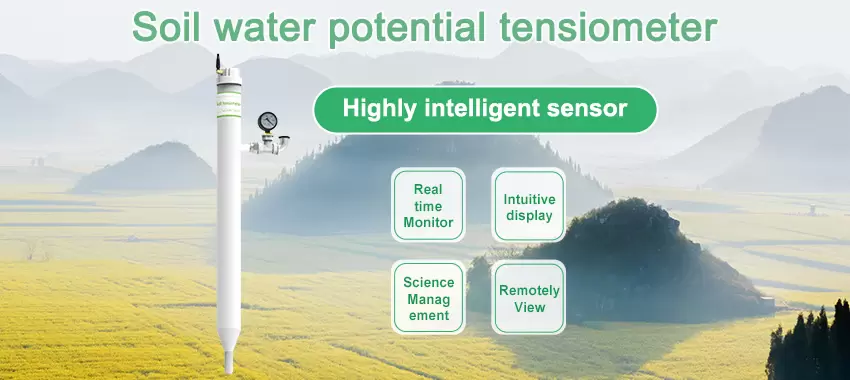What is Soil Wetness Sensor
Soil wetness sensor are devices that are designed to accurately measure soil moisture levels. They play an important role in agriculture, horticulture, and environmental monitoring, as well as in the development of geological and hydrological models. In this article, we will explain how soil wetness sensors work, and the various uses and benefits they provide.

Working principle of Soil wetness sensors
Soil wetness sensors work by detecting changes in electrical conductivity and capacitance, both of which are directly proportional to soil moisture content. They typically consist of two electrodes that are placed in the soil, with one acting as a voltage source and the other as a signal receiver. When water molecules are present, they fill the gaps between soil particles, which in turn reduces the electrical resistance between the electrodes. This change in resistance is then detected by the sensor and translated into a moisture reading.
There are several types of soil wetness sensors available, each with their own advantages and disadvantages. The two most common types are Tensiometers and Capacitive sensors.
Tensiometers consist of a hollow tube that is inserted into the soil, with a porous ceramic tip that is in contact with the soil. The tube is filled with water, and as soil moisture levels decrease, the water is drawn out of the tube to the soil through the ceramic tip. The pressure required to extract the water out of the tube is directly proportional to the soil moisture tension, which in turn is related to the soil moisture content. Tensiometers provide a reliable and accurate measurement of soil moisture tension, but they require regular maintenance, and can only be used for monitoring soil moisture in saturated soil.
Capacitive sensors, on the other hand, use the principle of electrical capacitance to measure soil moisture content. They consist of a pair of electrodes that are placed in the soil, with one acting as a transmitter that generates a high-frequency electromagnetic field, and the other as a receiver. Soil moisture content affects the dielectric constant of the soil, which in turn affects the electrical capacitance between the electrodes. The change in capacitance is then detected by the sensor, and translated into a soil moisture reading. Capacitive sensors are relatively low maintenance, can be used in a wide range of soil types and moisture levels, and provide real-time monitoring capabilities.

Soil wetness sensors have a wide range of uses and benefits. In agriculture, they are commonly used to optimize plant growth and reduce water consumption. By monitoring soil moisture levels, farmers can adjust their irrigation schedules to ensure the best conditions for plant growth, while also reducing water waste and costs. Horticulturists also use soil moisture sensors to cultivate plants, monitor greenhouse conditions, and prevent diseases.
In addition to agriculture and horticulture, soil wetness sensors are also commonly used in environmental monitoring. They can be used to monitor soil moisture levels in wetlands, forests, and other natural ecosystems, which play important roles in the fertility of soil and the resilience of natural ecosystems.
Finally, soil wetness sensors have numerous applications in geological and hydrological modeling. Accurate and detailed information about soil moisture levels is necessary for modeling soil erosion, soil moisture transport, and groundwater recharge, among other environmental processes.
In conclusion, soil wetness sensors are invaluable tools for monitoring soil moisture content in a wide range of applications. By understanding how they work and the benefits they provide, farmers, horticulturists, and environmentalists can use this technology to optimize plant growth, reduce water consumption, and improve soil and environmental health.